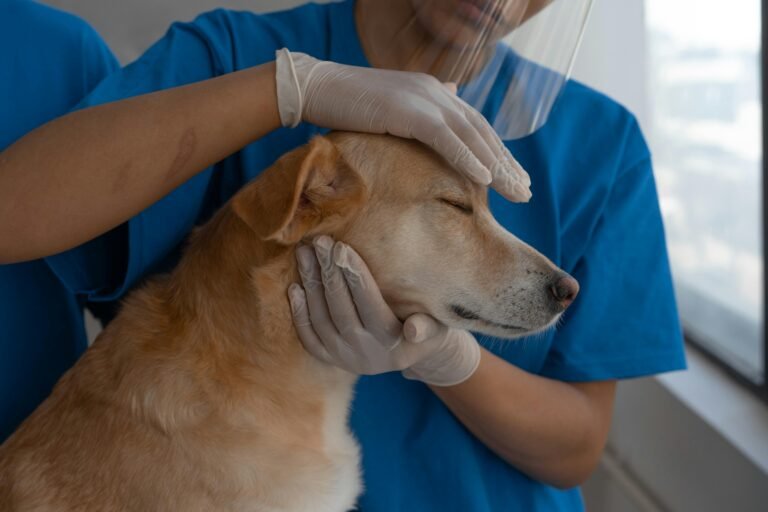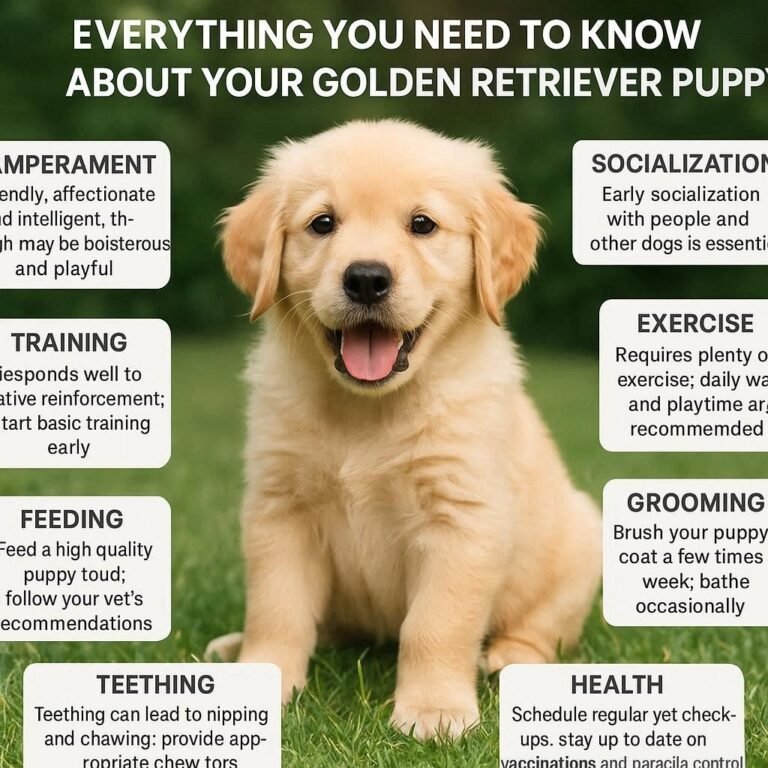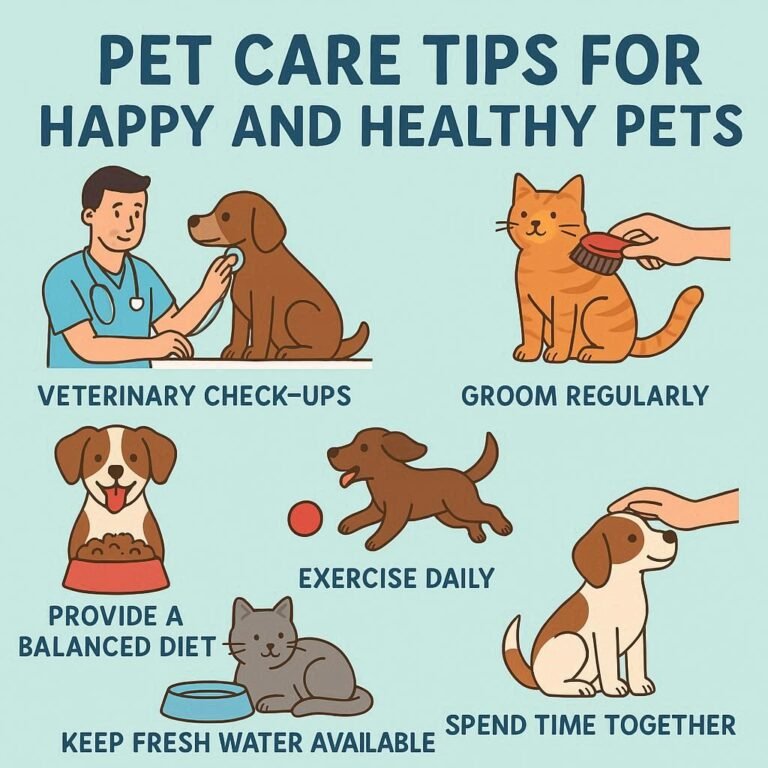Affordable Pet Care Tips Every Owner Should Know
Affordable Pet Care Tips Every Owner Should Know
Caring for a pet is one of life’s greatest joys. The unconditional love, the endless cuddles, and the hilarious antics they bring into our homes enrich our lives in countless ways. However, let’s be honest: pet ownership can also be quite expensive. From food and toys to unexpected vet visits, the costs can quickly add up, leaving many pet parents feeling overwhelmed. But what if we told you that providing top-notch care for your beloved companion doesn’t have to break the bank?
At JoyFluffy.com, we believe that every pet deserves a happy, healthy life, and every owner deserves peace of mind. That’s why we’ve put together this comprehensive guide to **affordable pet care**. We’ll share expert-backed advice, practical tips, and clever hacks to help you provide the best for your furry, feathered, or scaled friend without emptying your wallet. Get ready to discover how smart choices and a little bit of DIY spirit can make a huge difference in your pet care budget!

Smart Spending: Budget-Friendly Pet Food Solutions
Pet food is often one of the largest ongoing expenses for pet owners. But affordability doesn’t mean sacrificing nutrition.
Choosing Nutritious Yet Economical Pet Food
When it comes to pet food, the sheer number of options can be dizzying. While premium brands often come with a hefty price tag, many mid-range and even some budget-friendly brands offer excellent nutritional value.
- **Read Labels Carefully:** Look for meat as the first ingredient. Avoid fillers like corn, wheat, and soy, which offer little nutritional benefit. A study by the American Veterinary Medical Association (AVMA) suggests that focusing on nutrient profiles rather than marketing hype is key to choosing appropriate food.
- **Buy in Bulk (Wisely):** Purchasing larger bags of dry food can often lead to savings per pound. However, only do this if your pet will consume it before it spoils, and ensure you store it properly in an airtight container to maintain freshness and prevent pest infestations.
- **Consider Store Brands:** Many reputable pet supply stores and even some supermarkets now offer their own private-label pet foods. These are often manufactured by well-known pet food companies and can provide similar quality at a lower cost. Always check the ingredient list and guaranteed analysis.
- **Consult Your Vet:** Before switching your pet’s food, especially if they have dietary sensitivities or health conditions, always talk to your veterinarian. They can recommend specific brands or ingredients that meet your pet’s needs and your budget.
DIY Pet Food & Treat Alternatives
Making some of your pet’s food or treats at home can save money and give you control over ingredients.
- **Homemade Treats:** Instead of expensive store-bought treats, try baking your own. Simple ingredients like pumpkin, peanut butter (xylitol-free!), oats, and sweet potatoes can be combined to create delicious and healthy snacks. There are countless recipes online for everything from dog biscuits to catnip toys.
- **Safe Table Scraps (in Moderation):** While not a primary food source, certain human foods can be safe and healthy additions to your pet’s diet in small quantities. Cooked, plain chicken or turkey, carrots, green beans, and apple slices (without seeds) can be wonderful, inexpensive treats. **Always research what is safe and what is toxic** for your specific pet. Never feed onions, garlic, grapes, raisins, chocolate, or avocado.
- **Supplementing with Whole Foods:** For pets on a dry kibble diet, adding small amounts of cooked lean protein or vegetables can boost nutrition and enjoyment without significant cost.
Grooming on a Budget: DIY Hacks & Smart Choices
Professional grooming can be expensive, but many aspects of pet grooming can be done at home with a little practice and the right tools.
Home Grooming Essentials & Techniques
Investing in a few basic grooming tools can save you a fortune over time.
- **Brushing Regularly:** This is perhaps the simplest and most effective grooming tip. Regular brushing (daily for long-haired pets, a few times a week for short-haired) prevents mats and tangles, reduces shedding, distributes natural oils, and keeps your pet’s coat healthy. It also minimizes the need for professional dematting.
- **Bathing at Home:** Unless your pet requires a specific medicated bath, you can usually bathe them at home. Use a pet-specific shampoo, as human shampoos can irritate their skin. Make it a positive experience with treats and praise.
- **Nail Trimming:** Learning to trim your pet’s nails can save you around $10-20 per visit. Ask your vet or a professional groomer to show you how to do it safely to avoid cutting the quick. Regular trimming prevents discomfort, ingrown nails, and potential paw problems.
- **Ear Cleaning:** Check your pet’s ears regularly for dirt, wax buildup, or signs of infection. With a vet-approved ear cleaning solution and cotton balls, you can often clean their ears at home, preventing costly ear infections.
- **Dental Hygiene:** Dental disease is incredibly common and expensive to treat. Brushing your pet’s teeth daily (or at least several times a week) with pet-specific toothpaste and a toothbrush can dramatically reduce plaque and tartar buildup. Dental chews and water additives can also help.
Affordable Veterinary Care: Prevention & Planning
Vet bills are often the most unpredictable and daunting aspect of pet ownership. However, proactive and preventative care can significantly reduce long-term costs.
Prioritizing Preventive Care to Save Money
An ounce of prevention is truly worth a pound of cure when it comes to pet health.
- **Regular Check-ups:** Annual vet visits might seem like an expense, but they are crucial for catching potential health issues early, often when they are easier and less costly to treat. Your vet can spot subtle changes that you might miss.
- **Vaccinations & Parasite Prevention:** Keeping your pet up-to-date on vaccinations and protected against fleas, ticks, heartworms, and other parasites is non-negotiable. The cost of treating these preventable diseases far outweighs the cost of prevention. The ASPCA provides excellent resources on the importance of these preventive measures.
- **Spaying/Neutering:** Beyond population control, spaying or neutering your pet has significant health benefits, reducing the risk of certain cancers and behavioral problems, which can lead to expensive treatments down the line.
- **Maintaining a Healthy Weight:** Pet obesity is a growing problem and leads to a host of health issues, including diabetes, arthritis, and heart disease. Feeding appropriate portions and ensuring adequate exercise can prevent these costly conditions.
Smart Strategies for Managing Vet Costs
When unexpected vet bills arise, having a plan can ease the financial burden.
- **Pet Insurance:** Consider pet insurance, especially for younger animals. While it’s an upfront cost, it can provide immense relief if your pet faces a major illness or injury. Compare different providers and plans to find one that fits your budget and needs.
- **Emergency Fund:** Start a dedicated savings account for your pet. Even putting away $10-20 each month can build a substantial fund for emergencies over time.
- **Shop Around for Vets:** While continuity of care is important, it’s okay to research and compare veterinary clinics in your area. Some may offer more affordable services or payment plans.
- **Look for Low-Cost Clinics:** Many areas have low-cost vaccination clinics, spay/neuter programs, or animal welfare organizations that offer reduced-cost veterinary services. Check with your local humane society or animal shelter.
- **Discuss Costs Openly:** Don’t be afraid to talk to your vet about treatment costs. They may be able to suggest alternative treatments, offer payment plans, or help you prioritize essential care.
DIY Pet Supplies & Enrichment: Creative & Cheap Fun
You don’t need expensive toys and elaborate setups to keep your pet happy and entertained. Creativity and repurposing can go a long way.
Homemade Toys & Beds
Save money and engage your creative side by making your own pet essentials.
- **DIY Toys:** Many household items can be transformed into engaging toys. A toilet paper roll stuffed with treats, an old t-shirt braided into a tug toy, or a cardboard box transformed into a cat fort can provide hours of entertainment. Always ensure homemade toys are safe, with no small parts that can be swallowed.
- **Comfortable Beds from Old Materials:** An old pillow, a soft blanket, or even a discarded suitcase lined with cushions can become a cozy, custom-made bed for your pet. Not only is it eco-friendly, but it’s also a fraction of the cost of store-bought beds.
Free & Low-Cost Enrichment
Mental and physical stimulation is vital for your pet’s well-being.
- **Walks and Park Visits:** Taking your dog for walks, especially in new environments like a local park or hiking trail, provides immense physical and mental stimulation at no cost. For cats, supervised outdoor time on a harness can be incredibly enriching.
- **Training & Brain Games:** Basic obedience training, learning new tricks, or playing puzzle games (even homemade ones like hiding treats in a muffin tin with tennis balls) are fantastic for mental enrichment and strengthening your bond. The American Kennel Club (AKC) offers great guides on positive reinforcement training methods.
- **Interactive Play:** Simply playing fetch, chasing a laser pointer (for cats), or engaging in a game of hide-and-seek can tire out your pet and fulfill their need for interaction.
- **”Foraging” Opportunities:** Instead of putting all food in a bowl, scatter some kibble around the house or hide it in puzzle toys to encourage natural foraging behaviors.
General Money-Saving Pet Care Practices
Beyond the specific categories, a few overarching habits can lead to significant savings.
Smart Shopping & Resourcefulness
Being a savvy consumer can benefit your pet care budget.
- **Utilize Coupons & Sales:** Sign up for newsletters from pet supply stores, check coupon sites, and keep an eye out for sales. Stock up on non-perishable items like food, litter, and treats when they are discounted.
- **Consider Used Items:** Check local online marketplaces or thrift stores for gently used pet crates, carriers, or even beds. Just ensure they are clean and safe.
- **Pet-Sit Swaps:** If you frequently travel, consider swapping pet-sitting duties with a trusted friend or neighbor who also has pets. This can save on boarding costs.
Preventive Measures for a Healthy Home
A healthy environment contributes to a healthy pet, reducing vet visits.
- **Pet-Proofing Your Home:** Prevent accidents and ingestion of harmful substances by pet-proofing your home. Secure cabinets, keep toxic plants out of reach, and store medications safely. This can prevent emergency vet visits.
- **Regular Cleaning:** A clean living environment reduces allergens, parasites, and bacteria, contributing to your pet’s overall health. Regularly clean bedding, food bowls, and litter boxes.
Frequently Asked Questions (FAQs)
Here are some common questions about affordable pet care:
A1: Generic or store-brand pet foods can be perfectly fine, but it’s crucial to read the labels carefully. Look for clear ingredient lists, a guaranteed analysis, and ensure the food meets AAFCO (Association of American Feed Control Officials) nutritional standards for your pet’s life stage. When in doubt, consult your veterinarian.
A2: While only a vet can diagnose illnesses, you can monitor for common signs of distress: changes in appetite or thirst, lethargy, vomiting, diarrhea, difficulty breathing, limping, unusual lumps, or changes in behavior. If you notice any concerning symptoms, it’s always best to contact your vet. Many clinics offer phone consultations or advice lines.
A3: The cheapest and often most effective way to entertain your dog is through walks, playtime with you (fetch, tug-of-war), and homemade puzzle toys. Repurpose old t-shirts into braided tug toys, or hide treats around the house for a fun “sniffing” game. Mental stimulation from training new tricks is also excellent and free!
A4: Absolutely! Reputable organizations like the ASPCA, Humane Society, PetMD, and even government agricultural sites offer a wealth of free, expert-backed information on pet health, behavior, and care.
A5: This varies greatly by pet type, size, and individual needs. On average, owners can expect to spend anywhere from $50 to $200+ per month on basic care (food, treats, litter, routine prevention). It’s wise to also set aside an additional $20-$50 monthly for potential emergency vet visits or unexpected costs. A good rule of thumb is to factor in the potential for large, unexpected expenses.
Conclusion: Happy, Healthy Pets on Any Budget
Caring for a pet is a deeply rewarding experience, and with a little planning and resourcefulness, you can provide an excellent quality of life for your companion without financial stress. By focusing on preventive care, smart shopping, and embracing some DIY solutions, you’ll not only save money but also strengthen the bond you share with your beloved animal.
At JoyFluffy.com, we’re passionate about helping you be the best pet parent you can be. We hope these tips empower you to make informed, budget-friendly choices that contribute to your pet’s happiness and well-being for years to come. Remember, the greatest gift you can give your pet is your love and attention – and those are always free.
Happy petting!




